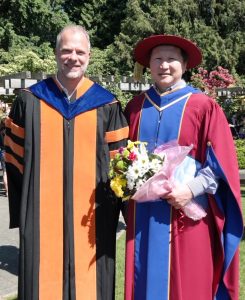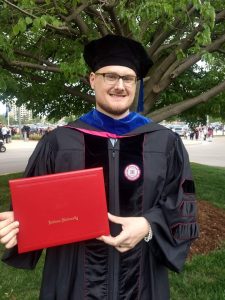By Julian Dierkes
It’s tourist season in Mongolia again. Tourism has been discussed as a possible route to economic diversification, but also faces a number of challenges, for example short seasons and the lack of touring infrastructure.
But during a recent Ulaanbaatar stay, Marc Tassé and I came to talk about museums in Ulaanbaatar and the curious facts that despite the great pride that Mongolians take in their nation and its history, the museums are really somewhat lacking as an element in attracting tourists.
MUSEUM OF THE MONTH: exhibition in honor of the 150th birthday of Bogd Khan, the 8th Jebtsundamba Khutuktu, comprised of artifacts from his personal collection goes on display today at the National Museum of Mongolia in Ulaanbaatar: https://t.co/S79dLqKAQe pic.twitter.com/FaqNSUYBtu
— CSEN (@csen_nomads) 1. Mai 2019
National Pride
As will become clear in any conversation with Mongolians, pride in the nation and its history is strong. There is the ever-present Chinggis Khaan, of course. The hype has died down since the 850th anniversary of his birth when Chinggis Khaan was ubiquitous and anything seemed to be named after him. The extent to which reference is made to a figure that is somewhat reviled and feared in the rest of the world and hit his zenith more than 800 years ago can sometimes be almost comical. It is also a massive distraction to many activities. The recent decision to close the government fund to support Mongolian studies (which in itself seemed to have a strong preference for historical and cultural studies projects; yes, you can sense some bitterness in this social scientist focused on contemporary Mongolia), and then open an Institute for Chinggis Khaan Studies (instead) is just one indicator of this focus on somewhat long-ago history. Yet, this focus comes with pride.
Generally, this pride carries both positive achievements, as well as a negative othering vis-a-vis neighbours, especially China.
Given this pride, one might expect a celebration of Mongolian history and Mongolian-ness in Ulaanbaatar. Surely, the state socialist period brought with it its fair share of hero worship (certainly not Chinggis Khaan, but the Sukhbaatar tomb on Sukhbaatar Sq for example) and didactic approaches to history, but where is the grand museum of Mongolian history, or the museum of the modern revolutions (1911, 1921, 1990)?
Museum is a great place of education, learning, enjoy, and family time. I observe here a lot of families mom with a son, dad with a daugther, nice couples. What a nice civilized society! How nice to have such museum? Why we in Mongolia, do not have nice museums? pic.twitter.com/4iGmA5EkM8
— бээлийн чинээ охин (@ob2133) July 3, 2019
Existing Museums
There are museums in Ulaanbaatar, of course. First and foremost perhaps the National Museum as it appears in the above tweet. But the fact that I have visited it only twice in nearly 15 years of regular trips to Mongolia probably suggests the shortcomings of that museum. For the purposes of the questions I’m addressing here, suffice it to say that the National Museum is not a great draw.
There is the Museum of Natural History, focused on archaeology. Again, not a great draw, although apparently at least the dinosaur exhibit is being resurrected in the former Lenin Museum.
In terms of national history, the Winter Palace is perhaps the most attractive with its collection of artefacts from the past 100+ years of history in an historical building that is increasingly disappearing in its surroundings as is the case for all historical buildings. It is also a bit of removed from the centre of town where most well-to-do foreign tourists might end up staying.
Anyone who comes to visit Ulaanbaatar with kids will not want to miss the Puzzle Museum. There is a lot of pride in Mongolia in display there, but the museum is hardly a national showcase, in part because it is also somewhat removed from the city centre.
It was only this summer that I’ve been introduced to the Ulaanbaatar City Museum by Pawel. The museum is small, but has two wonderful maps, an artistic rendition of historical Khuree, and a development plan from late in the state socialist period. This museum and its collection has some potential to be the corner stone of tourist activities in Ulaanbaatar, but is still far from realizing that potential for the causal visitor.
Then there are the National Art Gallery and the Zanabazar Museum of Fine Arts, but those are in a slightly different category given their focus on art.
Learned so much visiting @MendeeJ‘s old stomping grounds yesterday, incl Natl Defense Univ, Zhukov Museum and Military History Museum. Expert guides, interesting history, great discussions. pic.twitter.com/bOYV9n2CiT
— Julian Dierkes (@jdierkes) June 27, 2019
The most ambitious aspirant to a central tourist site is probably the Chinggis Khaan equestrian status that is about 50km outside of town in surrounding Tov Aimag. It is certainly an expressive of pride, though limited entirely to Chinggis Khaan. Impressive it is, shiny in a pastoral Mongolian landscape, huge. It is a project promoted by Press Battulga, of course, but the larger historical theme park around it is still in progress. The small museum in the base of the statue is also somewhat limited.
Aimag Museums
The museums in provincial capitals come closer to the aspirations of a museum as an expression of regional and national pride. Inevitably stuffed to the gills with local artefacts, these museums tend to focus on cultural artefacts and prominent local individuals, historical or more contemporary, and taxidermy. They are pedagogically old-fashioned with many rooms of glass display cases that are explained or even marked eclectically. These museums are often staffed by knowledgable locals who do not shy away from offering lengthy tours and discourses on exhibits. Yet, a national draw for tourism they are not.
Karakorum
The exception to that general pattern would be the Kharkhorin Museum. It is perhaps the most modern of Mongolia’s museums. Yet, it suffers from the same pedagogical shortcomings that most Ulaanbaatar and aimag museums suffer from, namely that exhibits are focused on documentation and display, but not on drawing visitors in or explaining connections between different phenomena.
For the Kharkhorin Museum it is almost painful that many of the questions that might come to mind quickly when visiting the site are not answered. Where exactly were the different sites in the Orkhon valley? How does the site of Erdene Zuu relate to that of the Chinggisid capital? Why did some buildings at Erdene Zuu seem to survive the destruction of religious institutions in the 1930s? For all the focus on Chinggis, this museum is surprisingly tight-lipped. In many ways, many museums in Mongolia follow a model that I recall from my childhood in Germany. It is assumed that a visitor is interested in the subject matter of displays, these displays are a visual and topical encyclopedia of sorts.
What’s Missing?
There is plenty of history to discuss, there are plenty of landmarks, and there is lots of pride in Mongolia’s past. What is generally missing is presentations that engage visitors beyond the mere display of artefacts.
Oh, and a mining museum in Nalaikh, of course, and the museum to document the abuses perpetrated by state socialism.
Disheartening to see that “Memorial Museum of Victims of Political Persecution” these days is primarily commercial parking lot. #Mongolia pic.twitter.com/M9nZ559JkK
— Julian Dierkes (@jdierkes) June 14, 2019

 Follow
Follow

